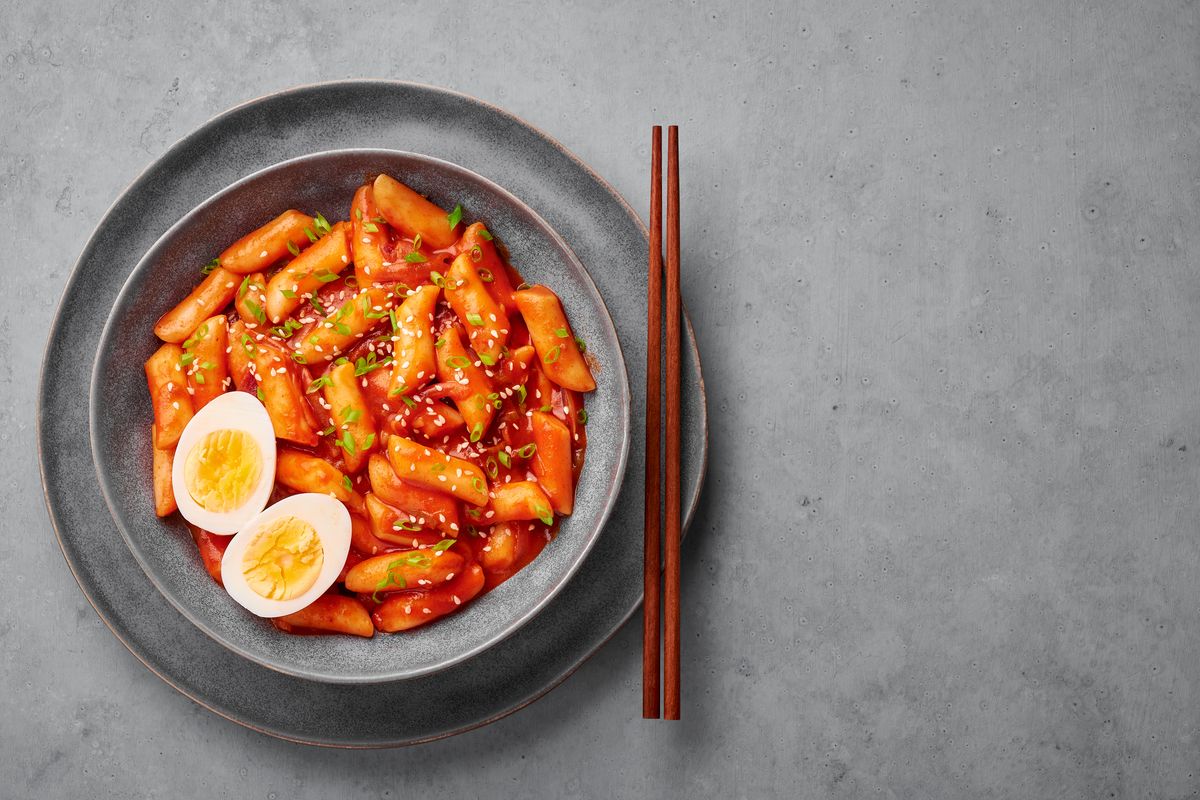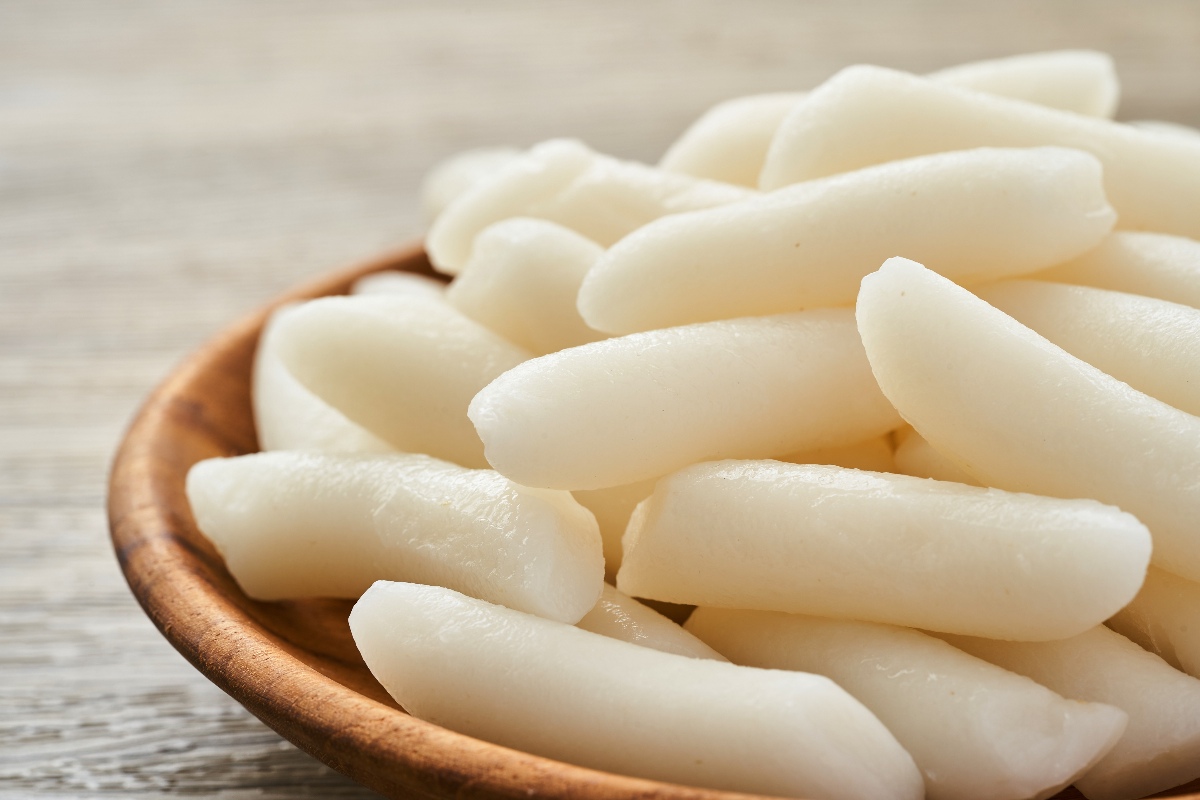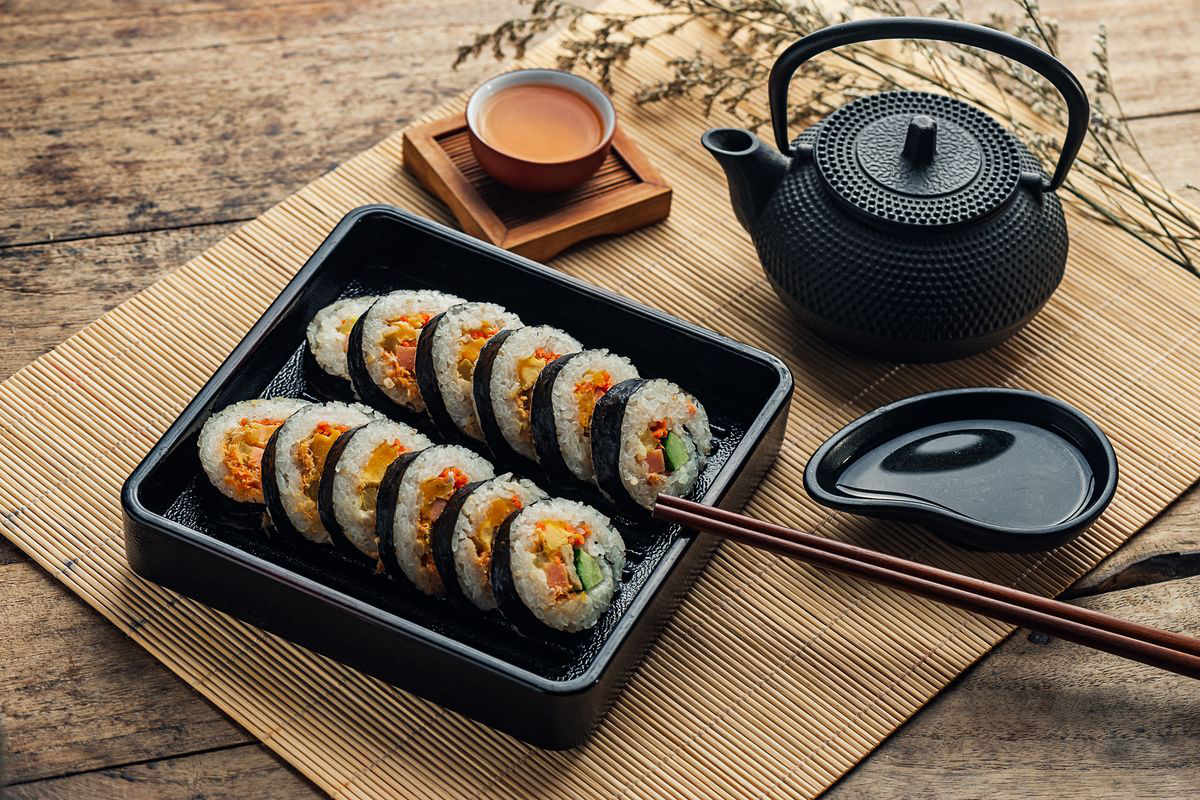Recipes
Tteokbokki, the Korean dumplings from Squid Game


Preparing tteokbokki, glutinous rice dumplings with incredible spiciness is really simple by following our recipe.
Tteokbokki are glutinous rice dumplings very famous in Korean cuisine . There is no street food stall that doesn't offer its own personal version, but what ties them all together is a discreet, perhaps even excessive, spiciness . Among the various traditional recipes, we have selected the simplest but at the same time tasty one.
To prepare tteokbokki the ingredients you need are Korean chilli paste (or Harissa), gochugaru (Korean chilli flakes, replaceable with chilli flakes), kombu seaweed, soy sauce and dried anchovies. You can also serve tteokbokki, Korean rice dumplings, with hard-boiled eggs but what really cannot be missing is the sprinkling of sesame seeds. Let's find out together how to prepare them.

Preparation
Korean rice dumplings (tteok)
First let's prepare homemade tteokbokki. In fact, these Korean rice dumplings are difficult to find outside the big cities so here's how to proceed: in a bowl mix the glutinous rice flour with the water until it forms a dough.
Work the dough vigorously on the pastry board for at least 3 minutes. It should be smooth and soft.
Then detach portions of the dough and form cords of 1 cm in diameter. Then cut them into 5-6 cm pieces and you will have obtained your Korean rice dumplings, also called rice cake or tteok .
Cook them in plenty of boiling water until they float to the surface. Drain them and immerse them in a bowl full of cold water. Now they are ready to be seasoned.
Here is a short video with all the steps to make them. Although it is not in Italian it is very useful for seeing the various textures and shapes of the gnocchi.
How to prepare tteokbokki
Prepare the seasoning. Pour the water into a pan, add the anchovies and seaweed and leave to boil for 10 minutes .
Then remove the seaweed, add the chilli paste ( gochujang ), soy sauce , sugar and chilli flakes (gochugaru).
Add the gnocchi and cook for 15 minutes or until they are tender and the sauce thickens.
Serve with hard-boiled eggs , a sprinkling of sesame seeds and the green onion sliced lengthwise.
You can also prepare non-spicy tteokbokki by omitting the two "incriminating" ingredients, namely the paste and chilli flakes. In their place you can add a couple of spoons of tomato paste and some sweet paprika . Clearly the flavor will not be the same because the chilli paste is very tasty and spicy, however you will get very respectable non-spicy tteokbokki.
If you want to experiment with another Korean recipe then try the dalgona biscuit , also the protagonist of Squid Game.
Conservation
Korean dumplings should be eaten freshly made. However, if you have leftovers, you can store them in the refrigerator for a couple of days and reheat them in a pan before consuming them.
Origin and history
The first written record of Korean rice dumplings dates back to the 19th century , so it is relatively recent. From their origins they were a very cheap dish , served in diners and street food stalls. The introduction of the spicy note, however, is much more recent: we were in the 1950s in a historic district of Seoul, Sindang, when tteokbokki became a dish more similar to the one we know today.
Although the most widespread version outside Korea is the one we have proposed, keep in mind that they can be found in different variations. The gungmul-tteokbokki are in broth with anchovies, kombu seaweed and rice syrup, a recipe similar to ours. Gireum-tteokbokki, on the other hand, are dry and seasoned with a sauce made from chili powder, soy sauce, sugar and sesame seed oil.
Depending on the accompanying ingredients they are then called haemul-tteokbokki (with seafood), galbi-tteokbokki (with beef ribs), rabokki and jjolbokki (with Korean noodles and spaghetti).
Riproduzione riservata © - WT












